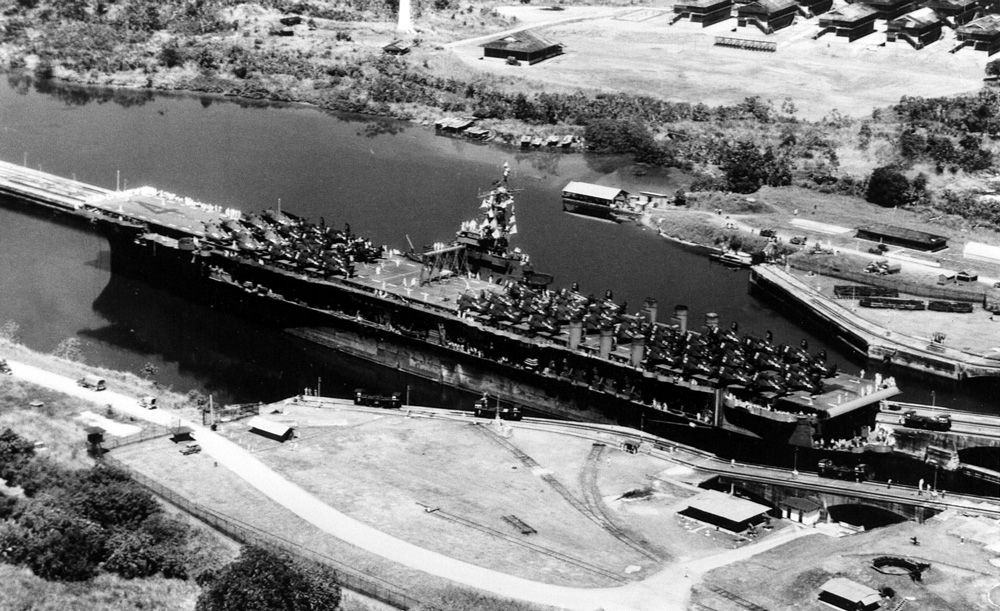
The Panama Canal is one of the most important waterways in the world for trade. However, only ships carrying a maximum of 4000-5000 containers can currently fit through the canal. This limits the amount of goods that can flow through the waterway.
Since 2007, the Panama Canal has been under construction. An expansion is currently underway which will dramatically increase the size of the canal, and therefore the size of the vessels that can pass through it. Soon, ships able to hold as many as 13,000 containers will be able to pass through the Canal. This will have three important effects on world trade:
1. Job creation
The fact that the existing Panama Canal can only fit smaller ships is a limiting factor in global trade. It forces companies to use longer or more complicated routes that often pass through congested areas such as Long Beach, California.
So, if larger container ships can fit through the new Panama Canal, this can increase efficiency and profits for the shipping industry by simplifying shipping route options, and decreasing the need for more expensive truck transport as part of the shipping route.
Cheaper transport costs, and a simpler shipping process equate to significant growth potential for the shipping industry.
Growth of an industry correlates to job creation, so the expansion of the Panama Canal can lead to an increase in jobs in distribution.
In fact, in preparation for the increased flow of goods from the expanded Panama Canal, Ohio invested $68.5 million in an Intermodal terminal in Columbus.
This terminal will be used to move shipping containers from vessels coming up the Ohio River to trucks, so that they can reach their final destination. This one terminal alone is set to create 20,000 jobs by 2038!
Boston anticipates that the Panama Canal expansions could help create more jobs for the city as well.
According to the Massachusetts Port Authority, dredging the Boston Harbor to increase its capacity for large ships from the expanded Panama Canal could help generate $4 billion in new business and create thousands of jobs.
Essentially, the expanded Panama Canal will allow goods to traverse the oceans in higher volumes. These higher volumes of goods will require higher volumes of workers in shipping, warehousing, and other supply chain management positions.
2. Major supply chain infrastructure development
If larger ships can pass through the Panama Canal, it means that they will be used more frequently in trans-ocean shipping, and will likely start going to new ports.
This means that ports that make an effort to accommodate larger ships can benefit from the new business they can bring in.
The expansion of the Panama Canal will result in major construction in ports to deepen channels, create new docks, and ensure they will be able to fit these bigger ships.
The ports of Miami, Savannah, Baltimore, and Charleston all already have official plans to make expansions to accommodate the larger ships.
Georgia and South Carolina are also working together to build the Jasper Ocean Terminal. When it is finished, this terminal will be capable of processing 7 million containers per year.
Ships from the Pacific Ocean that were too large to fit through the canal before will now be able to easily cross to the Atlantic Ocean. This means that tons of cargo that previously had to be put on trains or trucks on the west coast can now move by ship to the southeastern United States.
As a result, the Southeast will become much more important to East Coast distribution. Many supply lines will shift in order to use the Panama Canal, and the result will be the formation of new distribution centers and greater transport activity in the Southeast.
3. Substantial increases in business between Atlantic and Pacific nations
Presently, it is much easier for countries or regions that share an ocean to do business with one another. For example, it is easier for eastern Canada to do business with Europe than it is for that region to do business with Asia.
However, the expansion of the Panama Canal could significantly increase the amount of trade between disparate geographic regions.
For example, Marianela Dengo from the Panama Canal Authority’s Market Research Analysis department estimates that “coal exports from Colombia are expected to increase by more than 200 million tons in the next ten years. Colombian coal shipments to China could transit the canal in capsize vessels of 175,000 deadweight tons.”
In other words, the canal expansion is creating business opportunities that could not have been possible otherwise. The economy of scale just didn’t exist on this level.
Another area where the canal expansion could create benefits is in grain transport from the Midwestern United States to Asia. With the maximum capacity of ships able to traverse the Panama Canal set to more than double, there is much more incentive for the Midwest in the United States to sell grains to Asia. If vastly more product can be loaded onto a ship, then this makes the shipping process easier. If the shipping process is easier, then doing business with faraway customers is easier.
The Panama Canal is the equivalent of a strategic bridge. It is a funneling point through which massive amounts of goods must flow in order to keep trade bustling.
The current expansions will enable the Panama Canal to nearly triple its processing capacity. This will change the entire shipping industry as it is known today in a great step forward for international trade.
What other opportunities do you see with the expansion of the Panama Canal?








disqus comments